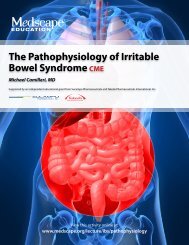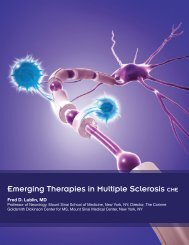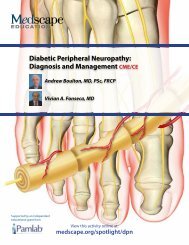FAX Order Form for ELIDEL® (pimecrolimus) Cream 1 ... - Medscape
FAX Order Form for ELIDEL® (pimecrolimus) Cream 1 ... - Medscape
FAX Order Form for ELIDEL® (pimecrolimus) Cream 1 ... - Medscape
- No tags were found...
You also want an ePaper? Increase the reach of your titles
YUMPU automatically turns print PDFs into web optimized ePapers that Google loves.
<strong>FAX</strong> <strong>Order</strong> <strong>Form</strong> <strong>for</strong> ELIDEL ® (<strong>pimecrolimus</strong>) <strong>Cream</strong> 1% through eSampleServices ®Please see IMPORTANT SAFETY INFORMATION <strong>for</strong> ELIDEL on Page 2 of this <strong>FAX</strong> <strong>Form</strong>Please send me ten (10) – 5 gram tubes of ELIDEL (pimecromilus) <strong>Cream</strong> 1%:Deliver to:Name: _________________________________________________Address 1 (No PO Boxes, please): ___________________________Address 2: ______________________________________________City/State/Zip: ___________________________________________Prescriber Phone # _______________________________________Prescriber <strong>FAX</strong> # _________________________________________From: Novartis Pharmaceuticals Corporation <strong>FAX</strong>: (866) 629-1536Instructions <strong>for</strong> Requesting Samples:• Please complete all the in<strong>for</strong>mation below using a blue or black ink pen. In compliance with thePrescription Drug Marketing Act (PDMA) regulations, incomplete requests cannot be processed.• Sign your name and indicate your professional designation.• <strong>FAX</strong> this <strong>for</strong>m to (866) 629-1536.• Keep your original, signed hard copy <strong>for</strong>m in your office files.• Read and acknowledge the following statements:o My signature certifies that I am a licensed practitioner eligible to request and receive thesesamples.oooThe samples are being requested <strong>for</strong> the medical needs of my patients.I understand that Federal law prohibits the sale, trade, barter, return <strong>for</strong> credit, and/orsubmission or acceptance <strong>for</strong> any reimbursement <strong>for</strong> these samples as I will not incur anycost in relation to them.I have reviewed the full Prescribing In<strong>for</strong>mation <strong>for</strong> Elidel.Prescriber’s State License # ____________________ Expiration Date __________________DEA #Check one __MD __DO __NP __PA Print date here _________________Prescriber’s Signature___________________________________(No Signature Stamps will be accepted.)<strong>FAX</strong> this completed <strong>for</strong>m to (866) 629-1536ELIDEL ® (<strong>pimecrolimus</strong>) <strong>Cream</strong> 1% is indicated as second-line therapy <strong>for</strong> the short-term and noncontinuouschronic treatment of mild to moderate atopic dermatitis in non-immunocompromised adultsand children 2 years of age and older, who have failed to respond adequately to other topical prescriptiontreatments, or when those treatments are not advisable.ELIDEL <strong>Cream</strong> is not indicated <strong>for</strong> use in children less than 2 years of age.Please see accompanying full Prescribing In<strong>for</strong>mation.Please see IMPORTANT SAFETY INFORMATION <strong>for</strong> ELIDEL on Page 2 of this <strong>FAX</strong> <strong>Form</strong>Please <strong>FAX</strong> only Page OneEDL-900121-G1
ELIDEL ® (<strong>pimecrolimus</strong>) <strong>Cream</strong> 1% is indicated as second-line therapy <strong>for</strong> the short-term and noncontinuouschronic treatment of mild to moderate atopic dermatitis in non-immunocompromised adultsand children 2 years of age and older, who have failed to respond adequately to other topical prescriptiontreatments, or when those treatments are not advisable.ELIDEL <strong>Cream</strong> is not indicated <strong>for</strong> use in children less than 2 years of age.IMPORTANT SAFETY INFORMATIONThe most common adverse events seen in clinical studies included application-site burning, headache,pharyngitis, nasopharyngitis, cough, influenza, pyrexia, and viral infection.WARNING:Long-term Safety of Topical Calcineurin Inhibitors Has Not Been Established.Although a causal relationship has not been established, rare cases of malignancy (e.g., skin andlymphoma) have been reported in patients treated with topical calcineurin inhibitors, including ELIDEL<strong>Cream</strong>.There<strong>for</strong>e:• Continuous long-term use of topical calcineurin inhibitors, including ELIDEL <strong>Cream</strong>, in any age groupshould be avoided, and application limited to areas of involvement with atopic dermatitis.• ELIDEL <strong>Cream</strong> is not indicated <strong>for</strong> use in children less than 2 years of age.Please see accompanying full Prescribing In<strong>for</strong>mation.© 2008 Novartis Pharmaceuticals Corporation 08/08 EDL-900121-G2
Elidel ®(<strong>pimecrolimus</strong>) <strong>Cream</strong> 1%FOR DERMATOLOGIC USE ONLYNOT FOR OPHTHALMIC USERx onlyPrescribing In<strong>for</strong>mationSee WARNINGS, boxed WARNING concerning long-term safety of topical calcineurin inhibitors.DESCRIPTIONELIDEL ® (<strong>pimecrolimus</strong>) <strong>Cream</strong> 1% contains the compound <strong>pimecrolimus</strong>, the immunosuppressant33-epi-chloro-derivative of the macrolactam ascomycin.Chemically, <strong>pimecrolimus</strong> is (1R,9S,12S,13R,14S,17R,18E,21S,23S,24R,25S,27R)-12-[(1E)-2-{(1R,3R,4S)-4-chloro-3-methoxycyclohexyl} -1-methylvinyl]-17-ethyl-1,14-dihydroxy-23,25-dimethoxy-13,19,21,27-tetramethyl-11,28-dioxa-4-aza-tricyclo[22.3.1.0 4,9 ]octacos-18-ene-2,3,10,16-tetraone.The compound has the empirical <strong>for</strong>mula C 43H 68CINO 11 and the molecular weight of 810.47. The structural<strong>for</strong>mula isClOONOHOHOHOPimecrolimus is a white to off-white fine crystalline powder. It is soluble in methanol and ethanol andinsoluble in water.Each gram of ELIDEL <strong>Cream</strong> 1% contains 10 mg of <strong>pimecrolimus</strong> in a whitish cream base of benzyl alcohol,cetyl alcohol, citric acid, mono- and di-glycerides, oleyl alcohol, propylene glycol, sodium cetostearylsulphate, sodium hydroxide, stearyl alcohol, triglycerides, and water.CLINICAL PHARMACOLOGYMechanism of Action/PharmacodynamicsThe mechanism of action of <strong>pimecrolimus</strong> in atopic dermatitis is not known. While the following have beenobserved, the clinical significance of these observations in atopic dermatitis is not known. It has been demonstratedthat <strong>pimecrolimus</strong> binds with high affinity to macrophilin-12 (FKBP-12) and inhibits the calciumdependentphosphatase, calcineurin. As a consequence, it inhibits T cell activation by blocking the transcriptionof early cytokines. In particular, <strong>pimecrolimus</strong> inhibits at nanomolar concentrations Interleukin-2 and interferongamma (Th1-type) and Interleukin-4 and Interleukin-10 (Th2-type) cytokine synthesis in human T cells. Inaddition, <strong>pimecrolimus</strong> prevents the release of inflammatory cytokines and mediators from mast cells in vitroafter stimulation by antigen/IgE.PharmacokineticsAbsorptionIn adult patients (n=52) being treated <strong>for</strong> atopic dermatitis [13%-62% Body Surface Area (BSA) involvement]<strong>for</strong> periods up to a year, a maximum <strong>pimecrolimus</strong> concentration of 1.4 ng/mL was observedamong those subjects with detectable blood levels. In the majority of samples in adult (91%; 1,244/1,362)subjects, blood concentrations of <strong>pimecrolimus</strong> were below 0.5 ng/mL. Data on blood levels of <strong>pimecrolimus</strong>measured in pediatric patients are described below in Special Populations, Pediatrics.DistributionLaboratory in vitro plasma protein binding studies using equilibrium gel filtration have shown that 99.5%of <strong>pimecrolimus</strong> in plasma is bound to proteins over the <strong>pimecrolimus</strong> concentration range of 2-100 ng/mLtested. The major fraction of <strong>pimecrolimus</strong> in plasma appears to be bound to various lipoproteins. As withother topical calcineurin inhibitors, it is not known whether <strong>pimecrolimus</strong> is absorbed into cutaneous lymphaticvessels or in regional lymph nodes.MetabolismFollowing the administration of a single oral radiolabeled dose of <strong>pimecrolimus</strong> numerous circulatingO-demethylation metabolites were seen. Studies with human liver microsomes indicate that <strong>pimecrolimus</strong>is metabolized in vitro by the CYP3A sub-family of metabolizing enzymes. No evidence of skin mediateddrug metabolism was identified in vivo using the minipig or in vitro using stripped human skin.EliminationBased on the results of the a<strong>for</strong>ementioned radiolabeled study, following a single oral dose of <strong>pimecrolimus</strong>~81% of the administered radioactivity was recovered, primarily in the feces (78.4%) as metabolites. Lessthan 1% of the radioactivity found in the feces was due to unchanged <strong>pimecrolimus</strong>.Special PopulationsPediatricsThe systemic exposure to <strong>pimecrolimus</strong> from ELIDEL ® (<strong>pimecrolimus</strong>) <strong>Cream</strong> 1% was investigated in 28pediatric patients with atopic dermatitis (20%-80% BSA involvement) between the ages of 8 months-14 yrs.Following twice daily application <strong>for</strong> three weeks, blood concentrations of <strong>pimecrolimus</strong> were
Elidel ® (<strong>pimecrolimus</strong>) <strong>Cream</strong> 1%Prolonged systemic use of calcineurin inhibitors <strong>for</strong> sustained immunosuppression in animal studies andtransplant patients following systemic administration has been associated with an increased risk of infections,lymphomas, and skin malignancies. These risks are associated with the intensity and duration ofimmunosuppression.Based on this in<strong>for</strong>mation and the mechanism of action, there is a concern about a potential risk with theuse of topical calcineurin inhibitors, including ELIDEL <strong>Cream</strong>. While a causal relationship has not beenestablished, rare cases of skin malignancy and lymphoma have been reported in patients treated with topicalcalcineurin inhibitors, including ELIDEL <strong>Cream</strong>. There<strong>for</strong>e:• ELIDEL <strong>Cream</strong> should not be used in immunocompromised adults and children.• If signs and symptoms of atopic dermatitis do not improve within 6 weeks, patients should bere-examined by their healthcare provider and their diagnosis be confirmed (see PRECAUTIONS).• The safety of ELIDEL <strong>Cream</strong> has not been established beyond one year of non-continuous use.(See CLINICAL PHARMACOLOGY, WARNINGS, boxed WARNING, PRECAUTIONS, INDICATIONS ANDUSAGE, and DOSAGE AND ADMINISTRATION.)PRECAUTIONSGeneralThe use of ELIDEL <strong>Cream</strong> should be avoided on malignant or pre-malignant skin conditions. Malignant orpre-malignant skin conditions, such as cutaneous T-cell lymphoma (CTCL), can present as dermatitis.ELIDEL <strong>Cream</strong> should not be used in patients with Netherton’s Syndrome or other skin diseases wherethere is the potential <strong>for</strong> increased systemic absorption of <strong>pimecrolimus</strong>. The safety of ELIDEL <strong>Cream</strong> hasnot been established in patients with generalized erythroderma.The use of ELIDEL <strong>Cream</strong> may cause local symptoms such as skin burning (burning sensation, stinging,soreness) or pruritus. Localized symptoms are most common during the first few days of ELIDEL <strong>Cream</strong>application and typically improve as the lesions of atopic dermatitis resolve (see ADVERSE REACTIONS).Bacterial and Viral Skin Infections: Be<strong>for</strong>e commencing treatment with ELIDEL <strong>Cream</strong>, bacterial or viralinfections at treatment sites should be resolved. Studies have not evaluated the safety and efficacy ofELIDEL <strong>Cream</strong> in the treatment of clinically infected atopic dermatitis.While patients with atopic dermatitis are predisposed to superficial skin infections including eczema herpeticum(Kaposi’s varicelli<strong>for</strong>m eruption), treatment with ELIDEL <strong>Cream</strong> may be independently associatedwith an increased risk of varicella zoster virus infection (chicken pox or shingles), herpes simplex virusinfection, or eczema herpeticum.In clinical studies, 15/1,544 (1%) cases of skin papilloma (warts) were observed in patients using ELIDEL<strong>Cream</strong>. The youngest patient was age 2 and the oldest was age 12. In cases where there is worsening ofskin papillomas or they do not respond to conventional therapy, discontinuation of ELIDEL <strong>Cream</strong> shouldbe considered until complete resolution of the warts is achieved.Patients with Lymphadenopathy: In clinical studies, 14/1,544 (0.9%) cases of lymphadenopathy werereported while using ELIDEL <strong>Cream</strong>. These cases of lymphadenopathy were usually related to infectionsand noted to resolve upon appropriate antibiotic therapy. Of these 14 cases, the majority had either a clearetiology or were known to resolve. Patients who receive ELIDEL <strong>Cream</strong> and who develop lymphadenopathyshould have the etiology of their lymphadenopathy investigated. In the absence of a clear etiology <strong>for</strong> thelymphadenopathy, or in the presence of acute infectious mononucleosis, ELIDEL <strong>Cream</strong> should be discontinued.Patients who develop lymphadenopathy should be monitored to ensure that the lymphadenopathyresolves.Sun Exposure: During the course of treatment, it is prudent <strong>for</strong> patients to minimize or avoid natural orartificial sunlight exposure, even while ELIDEL is not on the skin. The potential effects of ELIDEL <strong>Cream</strong>on skin response to ultraviolet damage are not known.Immunocompromised Patients: The safety and efficacy of ELIDEL <strong>Cream</strong> in immunocompromisedpatients have not been studied.In<strong>for</strong>mation <strong>for</strong> Patients(See Medication Guide.)Patients using ELIDEL <strong>Cream</strong> should receive the following in<strong>for</strong>mation and instructions:What is the most important in<strong>for</strong>mation a patient should know about ELIDEL <strong>Cream</strong>?The safety of using ELIDEL <strong>Cream</strong> <strong>for</strong> a long period of time is not known. A very small number of peoplewho have used ELIDEL <strong>Cream</strong> have had cancer (<strong>for</strong> example, skin or lymphoma). However, a link withELIDEL <strong>Cream</strong> use has not been shown. Because of this concern:• A patient should not use ELIDEL <strong>Cream</strong> continuously <strong>for</strong> a long time.• ELIDEL <strong>Cream</strong> should be used only on areas of skin that have eczema.• ELIDEL <strong>Cream</strong> is not <strong>for</strong> use on a child under 2 years old.How should a patient use ELIDEL <strong>Cream</strong>?• A patient should use ELIDEL <strong>Cream</strong> exactly as prescribed.• A patient should use ELIDEL <strong>Cream</strong> only on areas of skin that have eczema.• A patient should use ELIDEL <strong>Cream</strong> <strong>for</strong> short periods, and if needed, treatment may be repeated withbreaks in between.• A patient should stop ELIDEL <strong>Cream</strong> when the signs and symptoms of eczema, such as itching, rash,and redness go away, or as directed by the physician.• A patient should follow the physician’s advice if symptoms of eczema return after a treatment withELIDEL <strong>Cream</strong>.• A patient should contact the physician if:• symptoms get worse with ELIDEL <strong>Cream</strong>• the patient gets a skin infection• symptoms do not improve after 6 weeks of treatmentTo apply ELIDEL <strong>Cream</strong>:• A patient or caregiver should wash their hands be<strong>for</strong>e using ELIDEL <strong>Cream</strong>. When applying ELIDEL<strong>Cream</strong> after a bath or shower, the skin should be dry.• A patient or caregiver should apply a thin layer of ELIDEL <strong>Cream</strong> only to the affected skin areas, twice aday, as directed by the physician.• A patient or caregiver should use the smallest amount of ELIDEL <strong>Cream</strong> needed to control the signs andsymptoms of eczema.• Caregivers applying ELIDEL <strong>Cream</strong> to a patient, or a patient who is not treating the hands should washtheir hands with soap and water after applying ELIDEL <strong>Cream</strong>. This should remove any cream left on thehands.• A patient should not bathe, shower or swim right after applying ELIDEL <strong>Cream</strong>. This could wash off the cream.• A patient can use moisturizers with ELIDEL <strong>Cream</strong>. They should be sure to check with the physician firstabout the products that are right <strong>for</strong> them. Because the skin of patients with eczema can be very dry, itis important they keep up good skin care practices. If a patient uses moisturizers, he or she shouldapply them after ELIDEL <strong>Cream</strong>.What should a patient avoid while using ELIDEL <strong>Cream</strong>?• A patient should not use sun lamps, tanning beds, or get treatment with ultraviolet light therapy duringtreatment with ELIDEL <strong>Cream</strong>.• A patient should limit sun exposure during treatment with ELIDEL <strong>Cream</strong> even when the medicine is noton the skin. If a patient needs to be outdoors after applying ELIDEL <strong>Cream</strong>, the patient should wearloose fitting clothing that protects the treated area from the sun. The physician should advise the patientabout other types of protection from the sun.• A patient should not cover the skin being treated with bandages, dressings or wraps. A patient can wearnormal clothing.• A patient should not use ELIDEL <strong>Cream</strong> in the eyes. If ELIDEL <strong>Cream</strong> gets in the eyes, a patient shouldrinse them with cold water.• A patient should not swallow ELIDEL <strong>Cream</strong> and should contact the physician if they do.Drug InteractionsPotential interactions between ELIDEL and other drugs, including immunizations, have not been systematicallyevaluated. Due to low blood levels of <strong>pimecrolimus</strong> detected in some patients after topical application,systemic drug interactions are not expected, but cannot be ruled out. The concomitant administrationof known CYP3A family of inhibitors in patients with widespread and/or erythrodermic disease should bedone with caution. Some examples of such drugs are erythromycin, itraconazole, ketoconazole, fluconazole,calcium channel blockers and cimetidine.Carcinogenesis, Mutagenesis, Impairment of FertilityIn a 2-year rat dermal carcinogenicity study using ELIDEL <strong>Cream</strong>, a statistically significant increase in theincidence of follicular cell adenoma of the thyroid was noted in low, mid and high dose male animals comparedto vehicle and saline control male animals. Follicular cell adenoma of the thyroid was noted in thedermal rat carcinogenicity study at the lowest dose of 2 mg/kg/day [0.2% <strong>pimecrolimus</strong> cream; 1.5X theMaximum Recommended Human Dose (MRHD) based on AUC comparisons]. No increase in the incidenceof follicular cell adenoma of the thyroid was noted in the oral carcinogenicity study in male rats upto 10 mg/kg/day (66X MRHD based on AUC comparisons). However, oral studies may not reflect continuousexposure or the same metabolic profile as by the dermal route. In a mouse dermal carcinogenicitystudy using <strong>pimecrolimus</strong> in an ethanolic solution, no increase in incidence of neoplasms was observed inthe skin or other organs up to the highest dose of 4 mg/kg/day (0.32% <strong>pimecrolimus</strong> in ethanol) 27X MRHDbased on AUC comparisons. However, lymphoproliferative changes (including lymphoma) were noted in a13 week repeat dose dermal toxicity study conducted in mice using <strong>pimecrolimus</strong> in an ethanolic solutionat a dose of 25 mg/kg/day (47X MRHD based on AUC comparisons). No lymphoproliferative changeswere noted in this study at a dose of 10 mg/kg/day (17X MRHD based on AUC comparison). However, thelatency time to lymphoma <strong>for</strong>mation was shortened to 8 weeks after dermal administration of <strong>pimecrolimus</strong>dissolved in ethanol at a dose of 100 mg/kg/day (179-217X MRHD based on AUC comparisons).In a mouse oral (gavage) carcinogenicity study, a statistically significant increase in the incidence of lymphomawas noted in high dose male and female animals compared to vehicle control male and femaleanimals. Lymphomas were noted in the oral mouse carcinogenicity study at a dose of 45 mg/kg/day(258-340X MRHD based on AUC comparisons). No drug-related tumors were noted in the mouse oralcarcinogenicity study at a dose of 15 mg/kg/day (60-133X MRHD based on AUC comparisons). In an oral(gavage) rat carcinogenicity study, a statistically significant increase in the incidence of benign thymomawas noted in 10 mg/kg/day <strong>pimecrolimus</strong> treated male and female animals compared to vehicle controltreated male and female animals. In addition, a significant increase in the incidence of benign thymomawas noted in another oral (gavage) rat carcinogenicity study in 5 mg/kg/day <strong>pimecrolimus</strong> treated maleanimals compared to vehicle control treated male animals. No drug-related tumors were noted in the ratoral carcinogenicity study at a dose of 1 mg/kg/day male animals (1.1X MRHD based on AUC comparisons)and at a dose of 5 mg/kg/day <strong>for</strong> female animals (21X MRHD based on AUC comparisons).In a 52-week dermal photo-carcinogenicity study, the median time to onset of skin tumor <strong>for</strong>mation wasdecreased in hairless mice following chronic topical dosing with concurrent exposure to UV radiation (40weeks of treatment followed by 12 weeks of observation) with the ELIDEL <strong>Cream</strong> vehicle alone. No additionaleffect on tumor development beyond the vehicle effect was noted with the addition of the activeingredient, <strong>pimecrolimus</strong>, to the vehicle cream.A 39-week oral monkey toxicology study was conducted with <strong>pimecrolimus</strong> doses of 15, 45 and120 mg/kg/day. A dose dependent increase in expression of immunosuppressive-related lymphoproliferativedisorder (IRLD) associated with lymphocryptovirus (a monkey strain of virus related to humanEpstein Barr virus) was observed. IRLD in monkeys mirrors what has been noted in human transplantpatients after chronic systemic immunosuppressive therapy, post transplantation lymphoproliferative disease(PTLD), after treatment with chronic systemic immunosuppressive therapy. Both IRLD and PTLD canprogress to lymphoma, which is dependent on the dose and duration of systemic immunosuppressivetherapy. A dose dependent increase in opportunistic infections (a signal of systemic immunosuppression)was also noted in this monkey study. A no observed adverse effect level (NOAEL) <strong>for</strong> IRLD and opportunisticinfections was not established in this study. IRLD occurred at the lowest dose of 15 mg/kg/day <strong>for</strong>39 weeks [31X the Maximum Recommended Human Dose (MRHD) of ELIDEL <strong>Cream</strong> based on AUC comparisons]in this study. A partial recovery from IRLD was noted upon cessation of dosing in this study.A battery of in vitro genotoxicity tests, including Ames assay, mouse lymphoma L5178Y assay, and chromosomeaberration test in V79 Chinese hamster cells and an in vivo mouse micronucleus test revealed noevidence <strong>for</strong> a mutagenic or clastogenic potential <strong>for</strong> the drug.An oral fertility and embryofetal developmental study in rats revealed estrus cycle disturbances, postimplantationloss and reduction in litter size at the 45 mg/kg/day dose (38X MRHD based on AUC comparisons).No effect on fertility in female rats was noted at 10 mg/kg/day (12X MRHD based on AUC comparisons).No effect on fertility in male rats was noted at 45 mg/kg/day (23X MRHD based on AUC comparisons),which was the highest dose tested in this study.A second oral fertility and embryofetal developmental study in rats revealed reduced testicular and epididymalweights, reduced testicular sperm counts and motile sperm <strong>for</strong> males and estrus cycle disturbances,decreased corpora lutea, decreased implantations and viable fetuses <strong>for</strong> females at 45 mg/kg/daydose (123X MRHD <strong>for</strong> males and 192X MRHD <strong>for</strong> females based on AUC comparisons). No effect on fertilityin female rats was noted at 10 mg/kg/day (5X MRHD based on AUC comparisons). No effect on fertilityin male rats was noted at 2 mg/kg/day (0.7X MRHD based on AUC comparisons).PregnancyTeratogenic Effects: Pregnancy Category CThere are no adequate and well-controlled studies of topically administered <strong>pimecrolimus</strong> in pregnantwomen. The experience with ELIDEL <strong>Cream</strong> when used by pregnant women is too limited to permitassessment of the safety of its use during pregnancy.In dermal embryofetal developmental studies, no maternal or fetal toxicity was observed up to the highestpracticable doses tested, 10 mg/kg/day (1% <strong>pimecrolimus</strong> cream) in rats (0.14X MRHD based on bodysurface area) and 10 mg/kg/day (1% <strong>pimecrolimus</strong> cream) in rabbits (0.65X MRHD based on AUC comparisons).The 1% <strong>pimecrolimus</strong> cream was administered topically <strong>for</strong> 6 hours/day during the period o<strong>for</strong>ganogenesis in rats and rabbits (gestational days 6-21 in rats and gestational days 6-20 in rabbits).A second dermal embryofetal development study was conducted in rats using <strong>pimecrolimus</strong> creamapplied dermally to pregnant rats (1 g cream/kg body weight of 0.2%, 0.6% and 1.0% <strong>pimecrolimus</strong>cream) from gestation day 6 to 17 at doses of 2, 6, and 10 mg/kg/day with daily exposure of approximately22 hours. No maternal, reproductive, or embryo-fetal toxicity attributable to <strong>pimecrolimus</strong> wasnoted at 10 mg/kg/day (0.66X MRHD based on AUC comparisons), the highest dose evaluated in thisstudy. No teratogenicity was noted in this study at any dose.A combined oral fertility and embryofetal developmental study was conducted in rats and an oral embryofetaldevelopmental study was conducted in rabbits. Pimecrolimus was administered during the period of
Elidel ® (<strong>pimecrolimus</strong>) <strong>Cream</strong> 1%organogenesis (2 weeks prior to mating until gestational day 16 in rats, gestational days 6-18 in rabbits)up to dose levels of 45 mg/kg/day in rats and 20 mg/kg/day in rabbits. In the absence of maternal toxicity,indicators of embryofetal toxicity (post-implantation loss and reduction in litter size) were noted at45 mg/kg/day (38X MRHD based on AUC comparisons) in the oral fertility and embryofetal developmentalstudy conducted in rats. No mal<strong>for</strong>mations in the fetuses were noted at 45 mg/kg/day (38X MRHD basedon AUC comparisons) in this study. No maternal toxicity, embryotoxicity or teratogenicity were noted inthe oral rabbit embryofetal developmental toxicity study at 20 mg/kg/day (3.9X MRHD based on AUCcomparisons), which was the highest dose tested in this study.A second oral embryofetal development study was conducted in rats. Pimecrolimus was administeredduring the period of organogenesis (gestational days 6 – 17) at doses of 2, 10 and 45 mg/kg/day. Maternaltoxicity, embryolethality and fetotoxicity were noted at 45 mg/kg/day (271X MRHD based on AUC comparisons).A slight increase in skeletal variations that were indicative of delayed skeletal ossification was alsonoted at this dose. No maternal toxicity, embryolethality or fetotoxicity were noted at 10 mg/kg/day (16XMRHD based on AUC comparisons). No teratogenicity was noted in this study at any dose.A second oral embryofetal development study was conducted in rabbits. Pimecrolimus was administeredduring the period of organogenesis (gestational days 7 – 20) at doses of 2, 6 and 20 mg/kg/day. Maternaltoxicity, embryotoxicity and fetotoxicity were noted at 20 mg/kg/day (12X MRHD based on AUC comparisons).A slight increase in skeletal variations that were indicative of delayed skeletal ossification was alsonoted at this dose. No maternal toxicity, embryotoxicity or fetotoxicity were noted at 6 mg/kg/day (5XMRHD based on AUC comparisons). No teratogenicity was noted in this study at any dose.An oral peri- and post-natal developmental study was conducted in rats. Pimecrolimus was administeredfrom gestational day 6 through lactational day 21 up to a dose level of 40 mg/kg/day. Only 2 of 22 femalesdelivered live pups at the highest dose of 40 mg/kg/day. Postnatal survival, development of the F1 generation,their subsequent maturation and fertility were not affected at 10 mg/kg/day (12X MRHD based onAUC comparisons), the highest dose evaluated in this study.Pimecrolimus was transferred across the placenta in oral rat and rabbit embryofetal developmental studies.There are, however, no adequate and well-controlled studies in pregnant women. Because animal reproductionstudies are not always predictive of human response, this drug should be used only if clearlyneeded during pregnancy.Nursing MothersIt is not known whether this drug is excreted in human milk. Because of the potential <strong>for</strong> serious adversereactions in nursing infants from <strong>pimecrolimus</strong>, a decision should be made whether to discontinue nursingor to discontinue the drug, taking into account the importance of the drug to the mother.Pediatric UseELIDEL <strong>Cream</strong> is not indicated <strong>for</strong> use in children less than 2 years of age.The long-term safety and effects of ELIDEL <strong>Cream</strong> on the developing immune system are unknown (seeWARNINGS, boxed WARNING, and INDICATIONS AND USAGE).Three Phase 3 pediatric studies were conducted involving 1,114 patients 2-17 years of age. Two studieswere 6-week randomized vehicle-controlled studies with a 20-week open-label phase and one was a vehiclecontrolled(up to 1 year) safety study with the option <strong>for</strong> sequential topical corticosteroid use. Of thesepatients 542 (49%) were 2-6 years of age. In the short-term studies, 11% of ELIDEL patients did notcomplete these studies and 1.5% of ELIDEL patients discontinued due to adverse events. In the one-yearstudy, 32% of ELIDEL patients did not complete this study and 3% of ELIDEL patients discontinued due toadverse events. Most discontinuations were due to unsatisfactory therapeutic effect.The most common local adverse event in the short-term studies of ELIDEL <strong>Cream</strong> in pediatric patientsages 2-17 was application site burning (10% vs. 13% vehicle); the incidence in the long-term study was9% ELIDEL vs. 7% vehicle (see ADVERSE REACTIONS). Adverse events that were more frequent (>5%) inpatients treated with ELIDEL <strong>Cream</strong> compared to vehicle were headache (14% vs. 9%) in the short-termtrial. Nasopharyngitis (26% vs. 21%), influenza (13% vs. 4%), pharyngitis (8% vs. 3%), viral infection(7% vs. 1%), pyrexia (13% vs. 5%), cough (16% vs. 11%), and headache (25% vs. 16%) were increasedover vehicle in the 1-year safety study (see ADVERSE REACTIONS). In 843 patients ages 2-17 yearstreated with ELIDEL <strong>Cream</strong>, 9 (0.8%) developed eczema herpeticum (5 on ELIDEL <strong>Cream</strong> alone and 4 onELIDEL <strong>Cream</strong> used in sequence with corticosteroids). In 211 patients on vehicle alone, there were nocases of eczema herpeticum. The majority of adverse events were mild to moderate in severity.Two Phase 3 studies were conducted involving 436 infants age 3 months-23 months. One 6-week randomizedvehicle-controlled study with a 20-week open-label phase and one safety study, up to one year,were conducted. In the 6-week study, 11% of ELIDEL and 48% of vehicle patients did not complete thisstudy; no patient in either group discontinued due to adverse events. Infants on ELIDEL <strong>Cream</strong> had anincreased incidence of some adverse events compared to vehicle. In the 6-week vehicle-controlled studythese adverse events included pyrexia (32% vs. 13% vehicle), URI (24% vs. 14%), nasopharyngitis (15%vs. 8%), gastroenteritis (7% vs. 3%), otitis media (4% vs. 0%), and diarrhea (8% vs. 0%). In the openlabelphase of the study, <strong>for</strong> infants who switched to ELIDEL <strong>Cream</strong> from vehicle, the incidence of theabove-cited adverse events approached or equaled the incidence of those patients who remained onELIDEL <strong>Cream</strong>. In the 6 month safety data, 16% of ELIDEL and 35% of vehicle patients discontinued earlyand 1.5% of ELIDEL and 0% of vehicle patients discontinued due to adverse events. Infants on ELIDEL<strong>Cream</strong> had a greater incidence of some adverse events as compared to vehicle. These included pyrexia(30% vs. 20%), URI (21% vs. 17%), cough (15% vs. 9%), hypersensitivity (8% vs. 2%), teething (27%vs. 22%), vomiting (9% vs. 4%), rhinitis (13% vs. 9%), viral rash (4% vs. 0%), rhinorrhea (4% vs. 0%),and wheezing (4% vs. 0%).Geriatric UseNine (9) patients ≥65 years old received ELIDEL <strong>Cream</strong> in Phase 3 studies. Clinical studies of ELIDEL didnot include sufficient numbers of patients aged 65 and over to assess efficacy and safety.ADVERSE REACTIONSNo phototoxicity and no photoallergenicity were detected in clinical studies with 24 and 33 normal volunteers,respectively. In human dermal safety studies, ELIDEL ® (<strong>pimecrolimus</strong>) <strong>Cream</strong> 1% did not inducecontact sensitization or cumulative irritation.In a one-year safety study in pediatric patients age 2-17 years old involving sequential use of ELIDEL<strong>Cream</strong> and a topical corticosteroid, 43% of ELIDEL patients and 68% of vehicle patients used corticosteroidsduring the study. Corticosteroids were used <strong>for</strong> more than 7 days by 34% of ELIDEL patients and54% of vehicle patients. An increased incidence of impetigo, skin infection, superinfection (infected atopicdermatitis), rhinitis, and urticaria were found in the patients that had used ELIDEL <strong>Cream</strong> and topicalcorticosteroid sequentially as compared to ELIDEL <strong>Cream</strong> alone.In 3 randomized, double-blind vehicle-controlled pediatric studies and one active-controlled adult study,843 and 328 patients respectively, were treated with ELIDEL <strong>Cream</strong>. In these clinical trials, 48 (4%) of the1,171 ELIDEL patients and 13 (3%) of 408 vehicle-treated patients discontinued therapy due to adverseevents. Discontinuations <strong>for</strong> AEs were primarily due to application site reactions, and cutaneous infections.The most common application site reaction was application site burning, which occurred in 8%-26% ofpatients treated with ELIDEL <strong>Cream</strong>.The following table depicts the incidence of adverse events pooled across the 2 identically designed 6-weekstudies with their open label extensions and the 1-year safety study <strong>for</strong> pediatric patients ages 2-17. Datafrom the adult active-controlled study is also included in this table. Adverse events are listed regardless ofrelationship to study drug.Treatment Emergent Adverse Events (≥1%) in ELIDEL ® Treatment GroupsPediatric Patients* Pediatric Patients* Pediatric Patients* Adult ActiveVehicle-Controlled Open-Label Vehicle-Controlled Comparator(6 weeks) (20 weeks) (1 year) (1 year)ELIDEL ® <strong>Cream</strong> Vehicle ELIDEL ® <strong>Cream</strong> ELIDEL ® <strong>Cream</strong> Vehicle ELIDEL ® <strong>Cream</strong>(N=267) (N=136) (N=335) (N=272) (N=75) (N=328)N (%) N (%) N (%) N (%) N (%) N (%)At least 1 AE 182 (68.2%) 97 (71.3%) 240 (72.0%) 230 (84.6%) 56 (74.7%) 256 (78.0%)Infections and InfestationsUpper RespiratoryTract InfectionNOS 38 (14.2%) 18 (13.2%) 65 (19.4%) 13 (4.8%) 6 (8.0%) 14 (4.3%)Nasopharyngitis 27 (10.1%) 10 (7.4%) 32 (19.6%) 72 (26.5%) 16 (21.3%) 25 (7.6%)Skin Infection NOS 8 (3.0%) 9 (5.1%) 18 (5.4%) 6 (2.2%) 3 (4.0%) 21 (6.4%)Influenza 8 (3.0%) 1 (0.7%) 22 (6.6%) 36 (13.2%) 3 (4.0%) 32 (9.8%)Ear Infection NOS 6 (2.2%) 2 (1.5%) 19 (5.7%) 9 (3.3%) 1 (1.3%) 2 (0.6%)Otitis Media 6 (2.2%) 1 (0.7%) 10 (3.0%) 8 (2.9%) 4 (5.3%) 2 (0.6%)Impetigo 5 (1.9%) 3 (2.2%) 12 (3.6%) 11 (4.0%) 4 (5.3%) 8 (2.4%)Bacterial Infection 4 (1.5%) 3 (2.2%) 4 (1.2%) 3 (1.1%) 0 6 (1.8%)Folliculitis 3 (1.1%) 1 (0.7%) 3 (0.9%) 6 (2.2%) 3 (4.0%) 20 (6.1%)Sinusitis 3 (1.1%) 1 (0.7%) 11 (3.3%) 6 (2.2%) 1 (1.3%) 2 (0.6%)Pneumonia NOS 3 (1.1%) 1 (0.7%) 5 (1.5%) 0 1 (1.3%) 1 (0.3%)Pharyngitis NOS 2 (0.7%) 2 (1.5%) 3 (0.9%) 22 (8.1%) 2 (2.7%) 3 (0.9%)PharyngitisStreptococcal 2 (0.7%) 2 (1.5%) 10 (3.0%) 0
Elidel ® (<strong>pimecrolimus</strong>) <strong>Cream</strong> 1%Treatment Emergent Adverse Events (≥1%) in ELIDEL ® Treatment GroupsPediatric Patients* Pediatric Patients* Pediatric Patients* Adult ActiveVehicle-Controlled Open-Label Vehicle-Controlled Comparator(6 weeks) (20 weeks) (1 year) (1 year)ELIDEL ® <strong>Cream</strong> Vehicle ELIDEL ® <strong>Cream</strong> ELIDEL ® <strong>Cream</strong> Vehicle ELIDEL ® <strong>Cream</strong>(N=267) (N=136) (N=335) (N=272) (N=75) (N=328)N (%) N (%) N (%) N (%) N (%) N (%)Musculoskeletal, Connective Tissue and Bone DisordersBack Pain 1 (0.4%) 2 (1.5%) 1 (0.3%)
Elidel ® (<strong>pimecrolimus</strong>) <strong>Cream</strong> 1%What should I avoid while using ELIDEL <strong>Cream</strong>?• Do not use sun lamps, tanning beds, or get treatment with ultravioletlight therapy during treatment with ELIDEL <strong>Cream</strong>.• Limit sun exposure during treatment with ELIDEL <strong>Cream</strong> evenwhen the medicine is not on your skin. If you need to be outdoorsafter applying ELIDEL <strong>Cream</strong>, wear loose fitting clothingthat protects the treated area from the sun. Ask your doctorwhat other types of protection from the sun you should use.• Do not cover the skin being treated with bandages, dressings orwraps. You can wear normal clothing.• Do not use ELIDEL <strong>Cream</strong> in the eyes. If ELIDEL <strong>Cream</strong> gets inyour eyes rinse your eyes with cold water.• Do not swallow ELIDEL <strong>Cream</strong>. If you do, call your doctor.What are the possible side effects of ELIDEL <strong>Cream</strong>?The most common side effect at the skin application site isburning or a feeling of warmth. These side effects are usually mildor moderate, happen during the first 5 days of treatment, andusually clear up in a few days. Call your doctor if the burning feelingis severe or lasts <strong>for</strong> more than 1 week.Other side effects include headache, common cold or stuffynose, sore throat, influenza, fever, viral infection, and cough.Some people may get viral skin infections (like cold sores, chickenpox, shingles, or warts) or swollen lymph nodes (glands).Talk to your doctor if you have a skin infection or if side effects(<strong>for</strong> example, swollen glands) continue or bother you.These are not all the side effects with ELIDEL <strong>Cream</strong>. Ask yourdoctor or pharmacist <strong>for</strong> more in<strong>for</strong>mation.How should I store ELIDEL <strong>Cream</strong>?• Store ELIDEL <strong>Cream</strong> at room temperature between 59° to 86°F(15° to 30°C).• Keep ELIDEL <strong>Cream</strong> and all medicines out of the reach ofchildren.General advice about ELIDEL <strong>Cream</strong>Medicines are sometimes prescribed <strong>for</strong> purposes other thanthose listed in a Medication Guide. Use ELIDEL <strong>Cream</strong> only <strong>for</strong> thecondition <strong>for</strong> which it was prescribed. Do not give ELIDEL <strong>Cream</strong>to other people even if they have the same symptoms you have,as it may not be right <strong>for</strong> them.This Medication Guide summarizes the most important in<strong>for</strong>mationabout ELIDEL <strong>Cream</strong>. If you would like more in<strong>for</strong>mation, talkwith your doctor.Your doctor or pharmacist can give you in<strong>for</strong>mation about ELIDEL<strong>Cream</strong> that is written <strong>for</strong> health care professionals. For more in<strong>for</strong>mation,you can also visit the Novartis Internet site at www.elidel.comor call the ELIDEL <strong>Cream</strong> help line at 877-4 ELIDEL (877-435-4335).What are the ingredients in ELIDEL <strong>Cream</strong>?Active ingredient: <strong>pimecrolimus</strong>Inactive ingredients: benzyl alcohol, cetyl alcohol, citric acid,mono- and di-glycerides, oleyl alcohol, propylene glycol, sodiumcetostearyl sulphate, sodium hydroxide, stearyl alcohol, triglycerides,and waterThis Medication Guide has been approved by the U.S. Food andDrug AdministrationManufactured by:Novartis Pharma Produktions GmbHWehr, GermanyDistributed by:Novartis Pharmaceuticals Corp.East Hanover, NJ 07936JANUARY 2006 T2006-02REV. AUGUST 2007T2007-04/T2006-025001372©Novartis


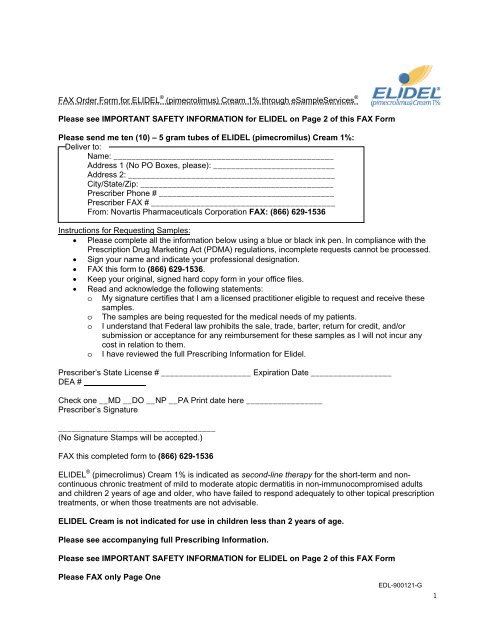
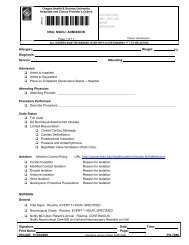


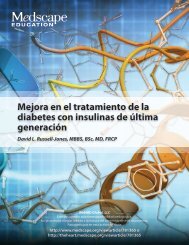
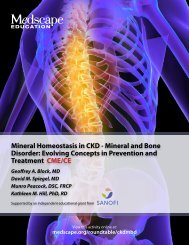
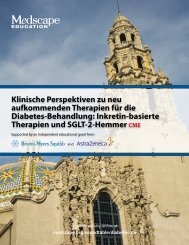
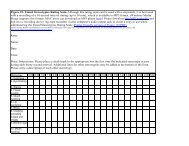

![NIH STROKE SCALE Interval: 1[ ] Baseline 2[ ] 2 hours ... - Medscape](https://img.yumpu.com/43645244/1/190x245/nih-stroke-scale-interval-1-baseline-2-2-hours-medscape.jpg?quality=85)
